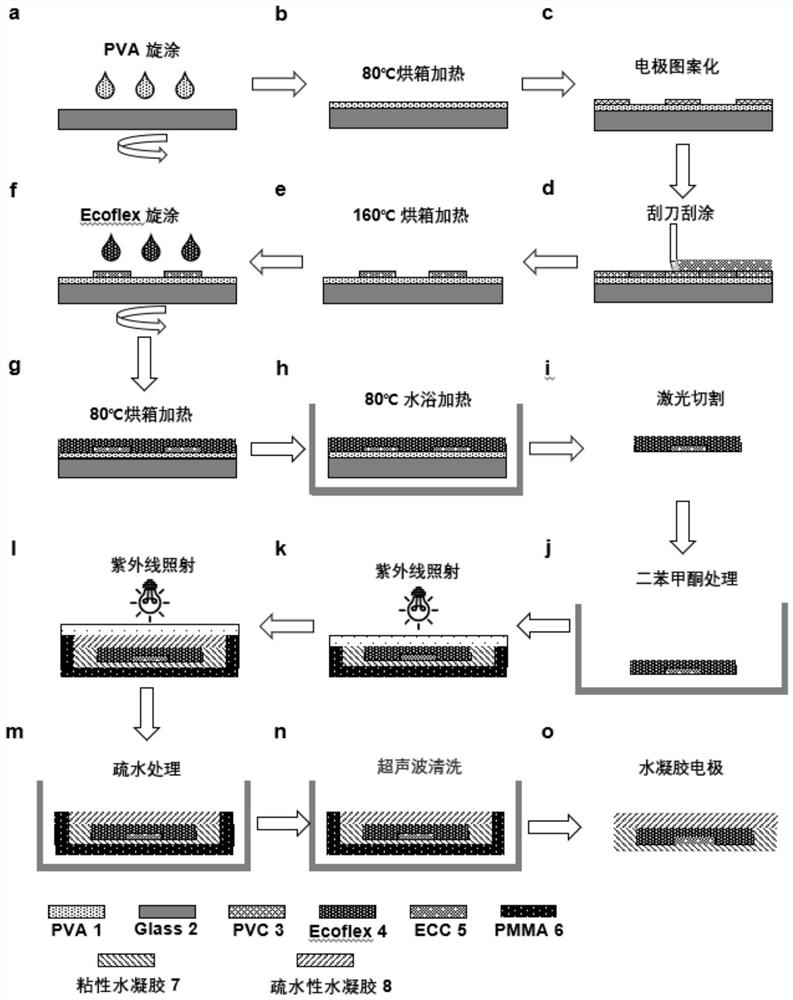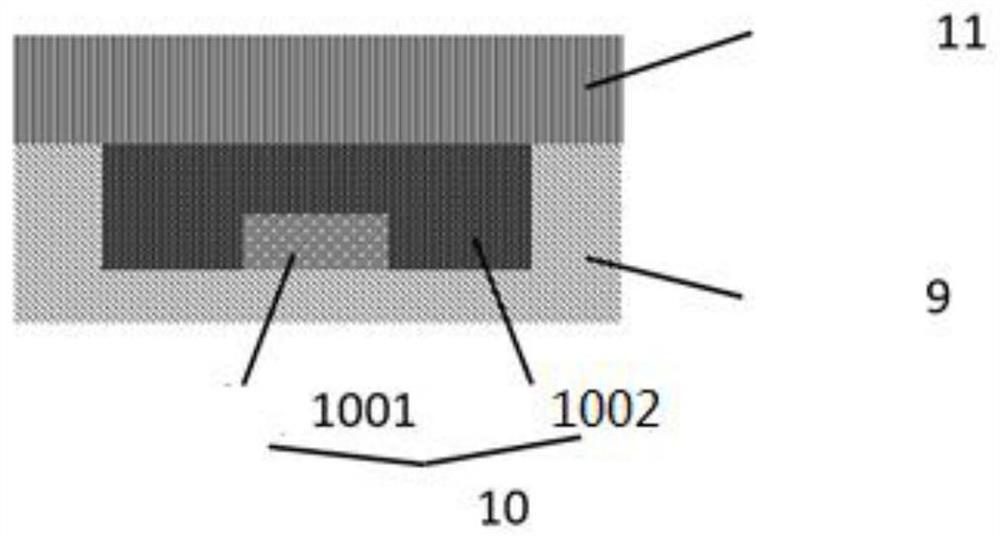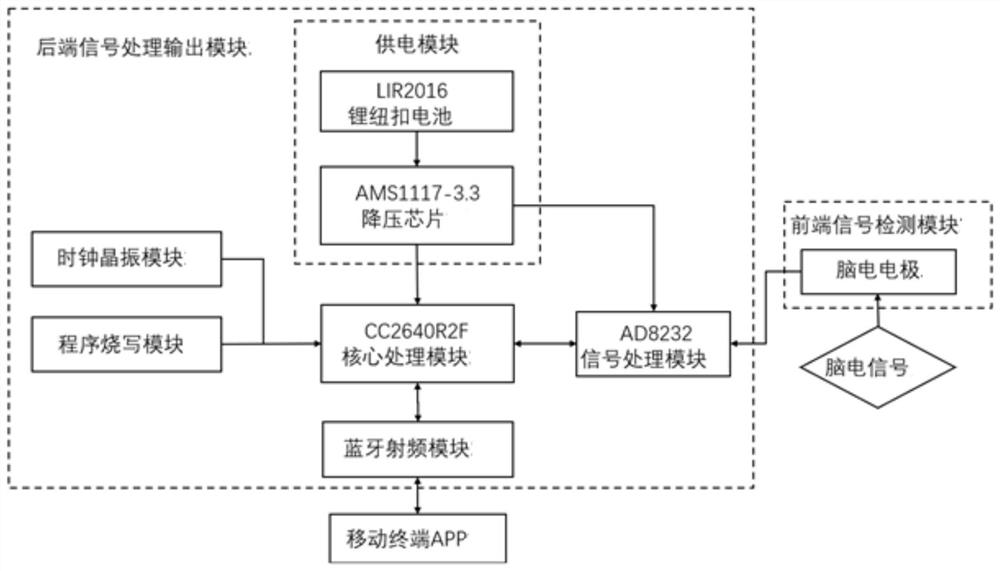Electrode, signal detection system, hydrogel applied to electrode and preparation method thereof
A hydrogel and viscous hydrogel technology, applied in applications, measuring devices, diagnostic recording/measurement, etc., can solve problems such as poor stretchability and biocompatibility, and the inability to judge the user's emotional state, and achieve high tensile strength Elongation performance, simple structure, effect of reducing gap
- Summary
- Abstract
- Description
- Claims
- Application Information
AI Technical Summary
Problems solved by technology
Method used
Image
Examples
preparation example Construction
[0041] The present invention also provides a method for preparing a hydrogel applied to an electrode, wherein the method for preparing the hydrophobic hydrogel mainly includes the following steps:
[0042] (1) Sodium dodecyl sulfate monomer was dissolved in sodium chloride solution to form SDS / NaCl micelles.
[0043] (2) put C 18 After the monomer is placed in the obtained solution, it is heated and stirred for a predetermined time so that C 18 into the micelles and then dissolve the acrylamide monomer in the stirred solution.
[0044] (3) After degassing the obtained mixed solution with nitrogen, add N,N'-methylenebisacrylamide monomer, clay and photoinitiator and stir, then transfer to nitrogen purging mold, After sealing for a period of time, a completely degassed hydrogel is prepared. In one embodiment, the hydrophobic hydrogel may be a liquid pre-polymerized hydrophobic hydrogel.
[0045] The preparation method of the viscous hydrogel mainly comprises the following st...
Embodiment 1
[0071] The preparation method of the electrode provided in Example 1 of the present invention mainly includes the following steps:
[0072] 1. Clean the hard substrate with acetone, isopropanol and deionized water in sequence, and then dry it with nitrogen. Preferably, the hard substrate is a quartz glass sheet 2 with a flat and smooth surface.
[0073] 2. Add polyvinyl alcohol powder to deionized water to dissolve, configure polyvinyl alcohol solution, and let it stand for later use. Preferably, the mass fraction of polyvinyl alcohol in the polyvinyl alcohol aqueous solution is 8%-12%, and the mass fraction of the dispersant is 0.5%-2%. The dispersant used was sodium lauryl sulfate. When preparing polyvinyl alcohol aqueous solution, add polyvinyl alcohol powder and dispersant to deionized water, and stir while heating. The heating temperature is 60°C to 80°C, and the stirring time is 4 hours to 6 hours; The solution was left standing at room temperature for later use.
[...
PUM
| Property | Measurement | Unit |
|---|---|---|
| thickness | aaaaa | aaaaa |
| thickness | aaaaa | aaaaa |
| thickness | aaaaa | aaaaa |
Abstract
Description
Claims
Application Information
 Login to View More
Login to View More - R&D
- Intellectual Property
- Life Sciences
- Materials
- Tech Scout
- Unparalleled Data Quality
- Higher Quality Content
- 60% Fewer Hallucinations
Browse by: Latest US Patents, China's latest patents, Technical Efficacy Thesaurus, Application Domain, Technology Topic, Popular Technical Reports.
© 2025 PatSnap. All rights reserved.Legal|Privacy policy|Modern Slavery Act Transparency Statement|Sitemap|About US| Contact US: help@patsnap.com



